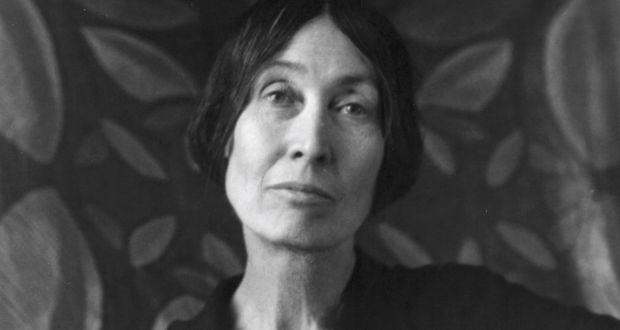Image Source: ThoughtCo
Elizabeth Gurley Flynn, 1890–1964
Activist, president of American Communist Party
While Mother Jones started her activist life approaching 60 years of age, Gurley Flynn started hers as a 16-year-old schoolgirl, calling on American workers to rise in front of a red flag on a makeshift stage on a New York street corner. Quickly becoming a ‘jawsmith’ (orator) for the Industrial Workers of the World (IWW), she was devoted to women, the working class, anti-racism, and anti-capitalism. Gurley Flynn was dedicated to women’s rights but saw feminism as bourgeois. She was a key figure in a generation of activists who saw class-based organization as key to the emancipation of women. She believed that women could never be free under capitalism; that only socialism could eradicate poverty and women’s economic dependence on men. She exemplifies intersectional feminism, recognising that the universal category of woman did not acknowledge the additional struggles faced by African American women, for example.
Gurley Flynn’s Irish parents were committed socialists and atheists, who imbued their children with a hatred of capitalism and empire. Annie Gurley encouraged her daughters to aspire to meaningful careers; she continued to work as a seamstress after marriage, at times supporting the household. While Gurley Flynn married at nineteen and had a son, this never defined her and she was determined to be financially self-sufficient (except during her ten-year relationship with the physician, Dr Marie Equi, when she rarely left their Portland home).
As a single parent, with the support of her mother and sister, she maintained her political commitments and gruelling schedule of US-wide public talks. When she started her career with the IWW (or ‘Wobblies’), workplace disputes commonly involved violence, long-drawn-out strikes, and lockouts. She was a brilliant strategist who pioneered new tactics, such as getting workers to sit idle at their machines, which eliminated ‘scab’ labour and prevented lockouts.
By 1910, she was the leading woman in the IWW. She also began to publicly advocate for women’s access to birth control, when it was still illegal to advertise such products in the press. In 1936, after a ten-year hiatus in Portland, Gurley Flynn returned to New York and joined the Communist Party, rising rapidly through its ranks. During the Cold War, communists were harassed and imprisoned as ‘un-American’. Gurley Flynn was one of over 100 communists imprisoned for their views in the 1950s, spending 28 months in the maximum-security wing of Alderson Female Penitentiary, West Virginia, in 1955–7. She had been in a similar position in 1917, when she and other members of the IWW were charged with ‘seditious conspiracy’, a charge next to treason.
American anti-communism only made Gurley Flynn more resolute in her commitment to freedom of speech and political association. She supported deportees who, under the 1918 Immigration Act, were summarily expelled as ‘alien anarchists’ without warning, and without their families. World War II gave American communists a brief reprieve, thanks to the alliance between the USA and the USSR. Gurley Flynn used this time to build a national platform and a wide support base, and to pursue feminist goals.
Her aims as director of the Women’s Commission of the Communist Party included the representation of women at all levels within the Party ‘against all concepts of male superiority’, and the full enfranchisement of African Americans and poorer women. Fascism, as she saw it, placed women in a subordinate position, so she framed gender equality as anti-fascist against the backdrop of millions of ‘Rosie the Riveters’ filling vacant jobs in factories. By 1943, 50% of the Party’s membership was female.
In 1961, she became the first woman elected head of the American Communist Party. She died on her second visit to Moscow in 1964. Lauded as a heroine in the USSR, she was given a full state funeral and Nina Khrushcheva was one of her pallbearers. Half of her ashes were buried by the Kremlin walls; the other half were conveyed to Chicago. Perhaps too-willing to believe that the ideals to which she had committed her life had been realised in the USSR, she never questioned Soviet propaganda about the quality of women’s lives under communism.
Sources: Lara Vapnek, Elizabeth Gurley Flynn: Modern American Revolutionary (Westview Press, 2015); Obituary, New York Times, 6 Sept. 1964.
Research by Dr Angela Byrne, DFAT Historian-in-Residence at EPIC The Irish Emigration Museum. Featured in the exhibition 'Blazing a Trail: Lives and Legacies of Irish Diaspora Women', a collaboration between Herstory, EPIC The Irish Emigration Museum and the Department of Foreign Affairs and Trade.


